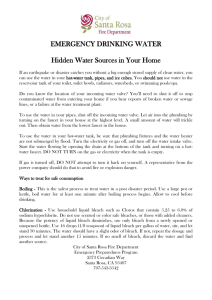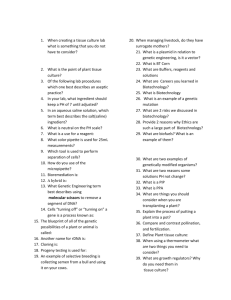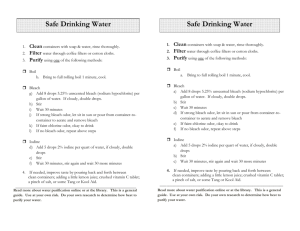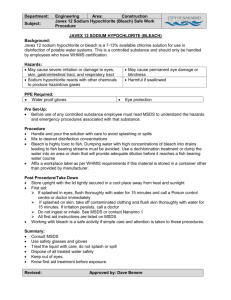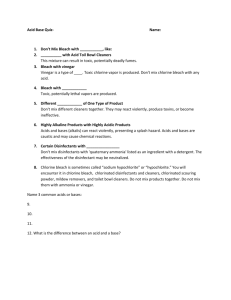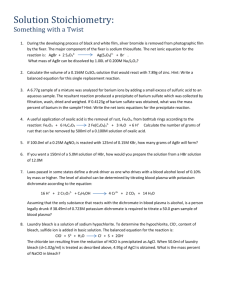Lab Volume
advertisement
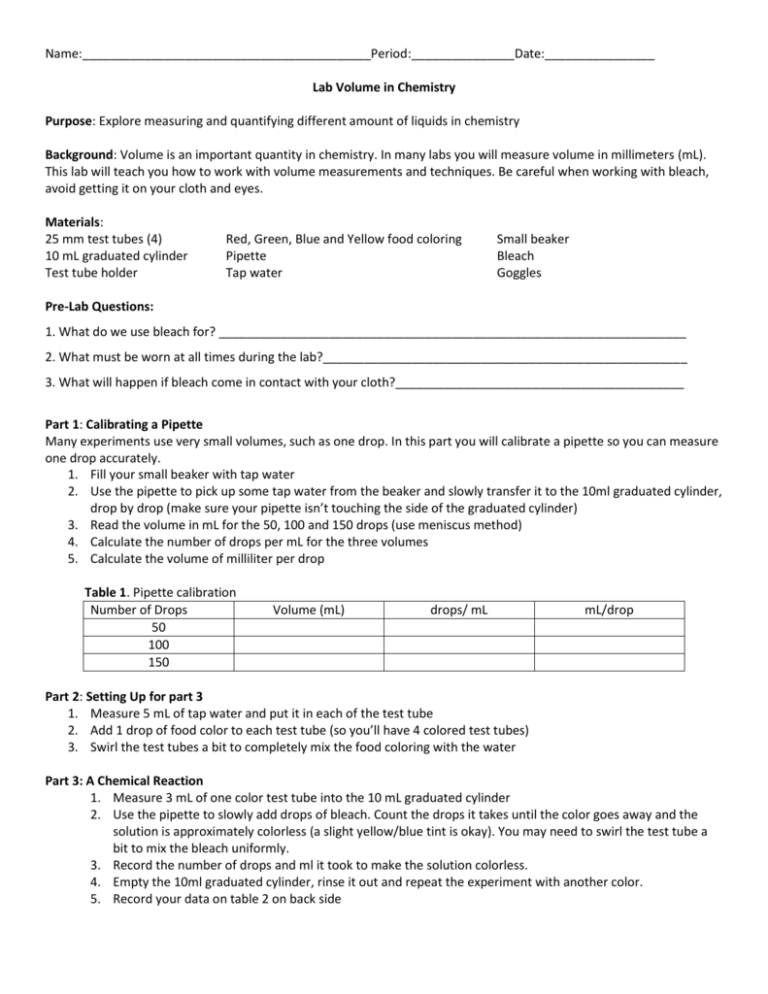
Name:__________________________________________Period:_______________Date:________________ Lab Volume in Chemistry Purpose: Explore measuring and quantifying different amount of liquids in chemistry Background: Volume is an important quantity in chemistry. In many labs you will measure volume in millimeters (mL). This lab will teach you how to work with volume measurements and techniques. Be careful when working with bleach, avoid getting it on your cloth and eyes. Materials: 25 mm test tubes (4) 10 mL graduated cylinder Test tube holder Red, Green, Blue and Yellow food coloring Pipette Tap water Small beaker Bleach Goggles Pre-Lab Questions: 1. What do we use bleach for? ____________________________________________________________________ 2. What must be worn at all times during the lab?_____________________________________________________ 3. What will happen if bleach come in contact with your cloth?__________________________________________ Part 1: Calibrating a Pipette Many experiments use very small volumes, such as one drop. In this part you will calibrate a pipette so you can measure one drop accurately. 1. Fill your small beaker with tap water 2. Use the pipette to pick up some tap water from the beaker and slowly transfer it to the 10ml graduated cylinder, drop by drop (make sure your pipette isn’t touching the side of the graduated cylinder) 3. Read the volume in mL for the 50, 100 and 150 drops (use meniscus method) 4. Calculate the number of drops per mL for the three volumes 5. Calculate the volume of milliliter per drop Table 1. Pipette calibration Number of Drops 50 100 150 Volume (mL) drops/ mL mL/drop Part 2: Setting Up for part 3 1. Measure 5 mL of tap water and put it in each of the test tube 2. Add 1 drop of food color to each test tube (so you’ll have 4 colored test tubes) 3. Swirl the test tubes a bit to completely mix the food coloring with the water Part 3: A Chemical Reaction 1. Measure 3 mL of one color test tube into the 10 mL graduated cylinder 2. Use the pipette to slowly add drops of bleach. Count the drops it takes until the color goes away and the solution is approximately colorless (a slight yellow/blue tint is okay). You may need to swirl the test tube a bit to mix the bleach uniformly. 3. Record the number of drops and ml it took to make the solution colorless. 4. Empty the 10ml graduated cylinder, rinse it out and repeat the experiment with another color. 5. Record your data on table 2 on back side Table 2. Drops of bleach added to remove color from solution Color Drops of bleach ml of bleach Part 4: Things to think about 1. Was mixing the food color in the water a chemical change or a physical change?________________________ 2. What makes the color in food coloring?__________________________________________________________ 3. Was mixing bleach with the food color a chemical change or a physical change? What evidence supports your claim?______________________________________________________________________________________ ___________________________________________________________________________________________ ___________________________________________________________________________________________ 4. Propose a possible explanation for why the bleach removed the color. ___________________________________________________________________________________________ ___________________________________________________________________________________________ 5. Did each color behave the same way? What does that suggest about the different colors? ___________________________________________________________________________________________ ___________________________________________________________________________________________ Part 5: Applications a. Use the data from Table 1 and Table 2 to calculate how many mL of bleach it took per ml of colored water. This tells you the percent volume of bleach you need to remove each color. Color ml of bleach (from table 2) ml of water ml of bleach/ml of water 3 3 3 3 b. Bleach is used in washing clothes because it chemically removes stains. Suppose your washing machine holds 15 gallons of water. How much bleach (in ml) would you add to remove a yellow food color stain with the same concentration as your experiment? 1 gallon = 3785 mL show all work. (*Hint: convert 15 gallon into ml, use the table in part 5 to find the amount of bleach needed) Clean Up Procedure: Rinse everything out and put them back in the front
